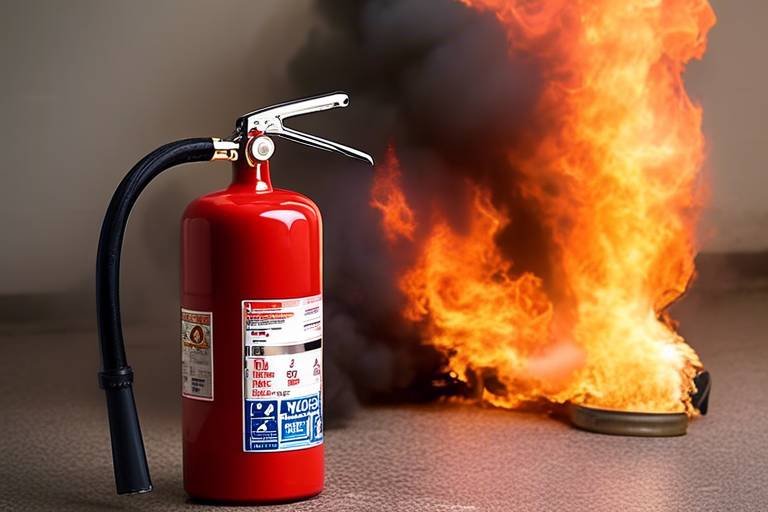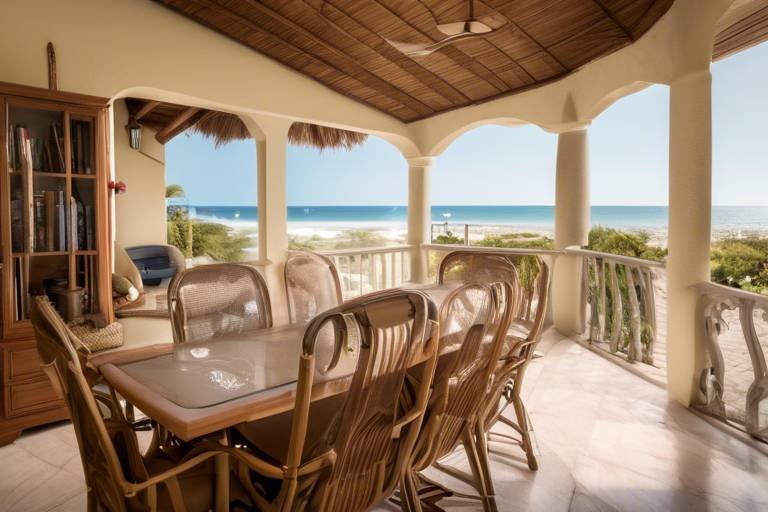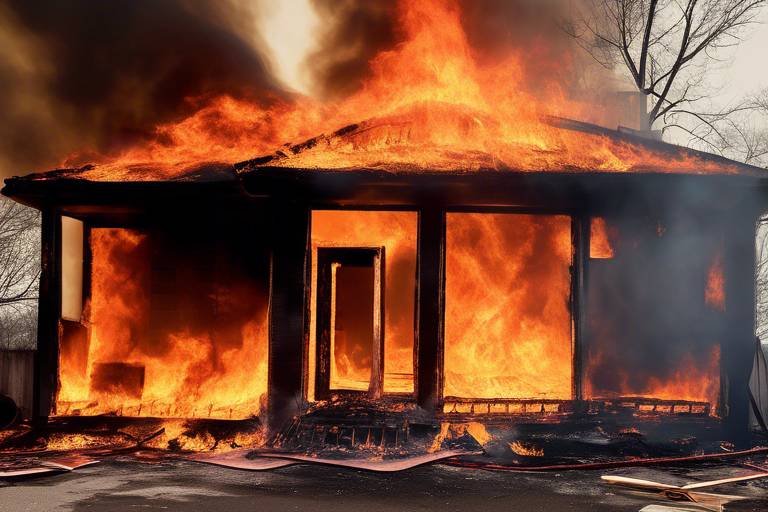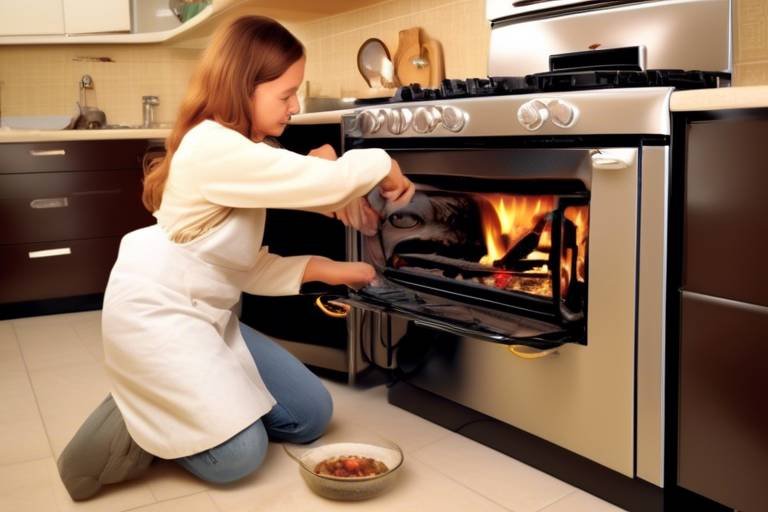Keeping Stairs and Balustrades Safe in Homes
This article explores essential safety measures for stairs and balustrades, highlighting best practices for homeowners to ensure the well-being of residents and visitors alike.
Understanding the significance of stair safety is crucial to prevent accidents. Stairs are often considered one of the most hazardous areas in a home, especially when you factor in the presence of children and elderly residents. Did you know that falls on stairs account for a significant percentage of household injuries? These accidents can lead to serious consequences, including fractures, head injuries, and even fatalities. It’s not just about the physical pain; the emotional toll on families can be devastating. By prioritizing stair safety, you create a secure environment that protects your loved ones and guests.
Selecting appropriate materials for stairs and balustrades can enhance safety significantly. The right choice not only ensures durability but also contributes to the overall aesthetic of your home. For instance, wood and metal are common materials used in stair construction, each with its own advantages and disadvantages. When making your choice, consider factors like maintenance, resistance to wear and tear, and, most importantly, safety features. A well-chosen material can make a significant difference in preventing slips and falls.
When it comes to stair materials, wood and metal are often at the forefront of homeowners' minds. Wood stairs offer a warm, inviting look that can seamlessly blend into various home styles. However, they require regular maintenance to prevent splintering and warping, which can create safety hazards. On the other hand, metal stairs are known for their strength and durability, often requiring less upkeep. Yet, they can become slippery when wet, which raises concerns about safety. Ultimately, the choice between wood and metal should be based on your specific needs, preferences, and the safety features each material can provide.
When opting for wooden stairs, it’s essential to incorporate specific safety features to minimize the risk of accidents. Non-slip finishes are a must; they can dramatically reduce the likelihood of slips, especially in high-traffic areas. Additionally, proper railing installation is crucial. Railings should be securely fastened and at an appropriate height to provide support. Regularly checking these features can help ensure that your wooden stairs remain safe for everyone in the household.
Metal stairs can also be made safer with a few enhancements. Anti-slip treads are a fantastic addition, providing extra grip and preventing slips, particularly in environments where water or debris might be present. Furthermore, applying corrosion-resistant coatings can extend the life of metal stairs, ensuring they remain safe and functional over time. By prioritizing these safety features, you can enjoy the benefits of metal stairs without compromising on safety.
When it comes to balustrades, design plays a critical role in safety. Key elements to consider include height, spacing, and the materials used. For example, balustrades should be tall enough to prevent falls, typically at least 36 inches high. The spacing between balusters should be narrow enough to prevent small children from slipping through—generally no more than 4 inches apart. Choosing materials that meet safety standards while enhancing the overall aesthetic of your home is essential. Whether you opt for glass, wood, or metal, ensuring that your balustrades are both beautiful and safe is a must.
Routine maintenance is essential for safety. Just like any other part of your home, stairs and balustrades require regular inspection and upkeep to ensure they remain secure and functional throughout their lifespan. A proactive approach can prevent minor issues from escalating into significant safety hazards. Homeowners should develop a maintenance schedule that includes checking for loose railings, worn-out treads, and any signs of damage or wear. Keeping a close eye on these elements can save you time, money, and, most importantly, protect your loved ones.
Learn about effective inspection techniques to identify potential hazards in stairs and balustrades. A thorough inspection should include:
- Checking for loose or damaged railings
- Inspecting stair treads for wear and tear
- Looking for signs of water damage or corrosion, especially in metal stairs
- Ensuring that balustrades are securely fastened and at the correct height
By regularly conducting these inspections, homeowners can address issues before they lead to accidents, ensuring a safe environment for all.
Knowing when to repair or replace damaged components of stairs and balustrades is vital for ongoing safety. If you notice any significant wear, such as cracks in the wood or rust on metal, it’s time to take action. Minor repairs can often be handled with a bit of DIY effort, like re-staining wood or applying a fresh coat of paint. However, if the damage is extensive, replacing the entire component may be necessary. Always prioritize safety over aesthetics; a small investment in repairs today can prevent a serious accident tomorrow.
Q: How often should I inspect my stairs and balustrades?
A: It’s best to inspect them at least once every six months or after any significant weather events.
Q: What materials are best for outdoor stairs?
A: Composite materials or treated wood are excellent options for outdoor stairs due to their durability and resistance to weather elements.
Q: Can I install balustrades myself?
A: Yes, but make sure to follow local building codes and guidelines to ensure safety and compliance.
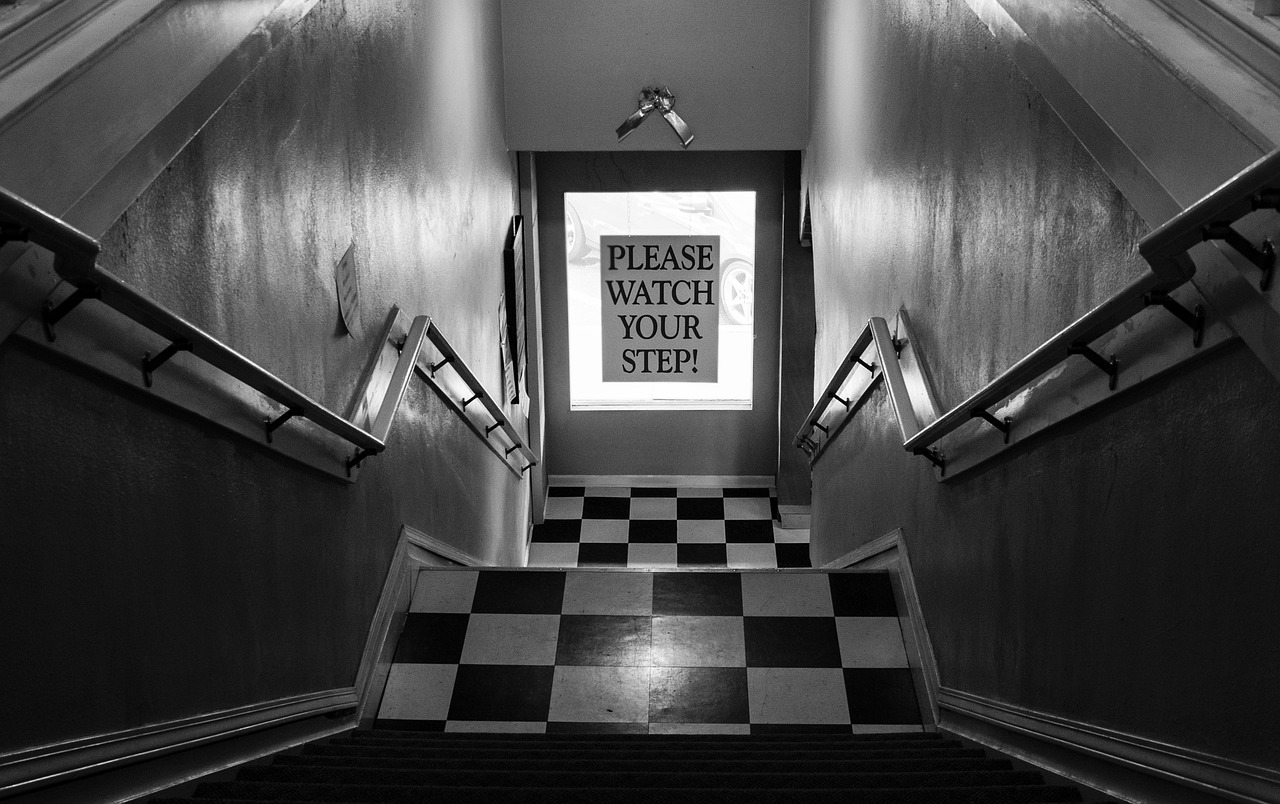
Importance of Stair Safety
When it comes to our homes, we often think about the big stuff—like the roof over our heads or the cozy living room where we gather with family. But what about those seemingly mundane things, like stairs? Stairs are an integral part of our homes, connecting different levels and spaces, but they can also be a **significant hazard** if not properly maintained. Did you know that falls on stairs are among the leading causes of injuries in the home? This is especially concerning for households with children and elderly residents, who are more vulnerable to accidents.
Imagine this: you’re rushing down the stairs, coffee in one hand and your phone in the other. Suddenly, you miss a step and—bam! You’re on the floor, possibly with a sprained ankle or worse. It’s a scenario that plays out far too often. According to the National Safety Council, approximately 1 million injuries occur each year due to falls on stairs. This staggering statistic highlights the need for **awareness** and **preventive measures**. So, what can we do to ensure our staircases are safe for everyone?
First and foremost, **understanding common hazards** associated with stairs is crucial. Poor lighting, uneven steps, loose handrails, and clutter can all contribute to accidents. For example, a dark staircase can make it nearly impossible to see where you’re stepping, increasing the risk of a fall. It’s essential to keep stairways well-lit and free of obstacles. Additionally, the materials used in stair construction can significantly impact safety. Slippery surfaces can lead to falls, so it’s vital to choose materials that offer good traction.
Furthermore, stairs should be designed with safety features in mind. This includes having sturdy handrails that are easy to grip and positioned at the correct height. The height of the stairs themselves should also be consistent; uneven steps can catch anyone off guard and lead to disastrous consequences. For households with young children, consider installing gates at the top and bottom of the stairs to prevent little ones from wandering onto the staircase unsupervised.
In summary, stair safety is not just a minor detail; it’s a critical aspect of home safety that deserves our attention. By recognizing potential hazards and implementing effective safety measures, we can create a secure environment for ourselves and our loved ones. After all, a safe home is a happy home, and we all want to avoid those unexpected tumbles down the stairs!
- What are the most common causes of stair accidents? Poor lighting, uneven steps, and slippery surfaces are among the top culprits.
- How can I improve stair safety in my home? Ensure good lighting, remove clutter, install sturdy handrails, and consider non-slip surfaces.
- Should I install gates for my children? Yes, installing gates at the top and bottom of the stairs can significantly enhance safety for young children.
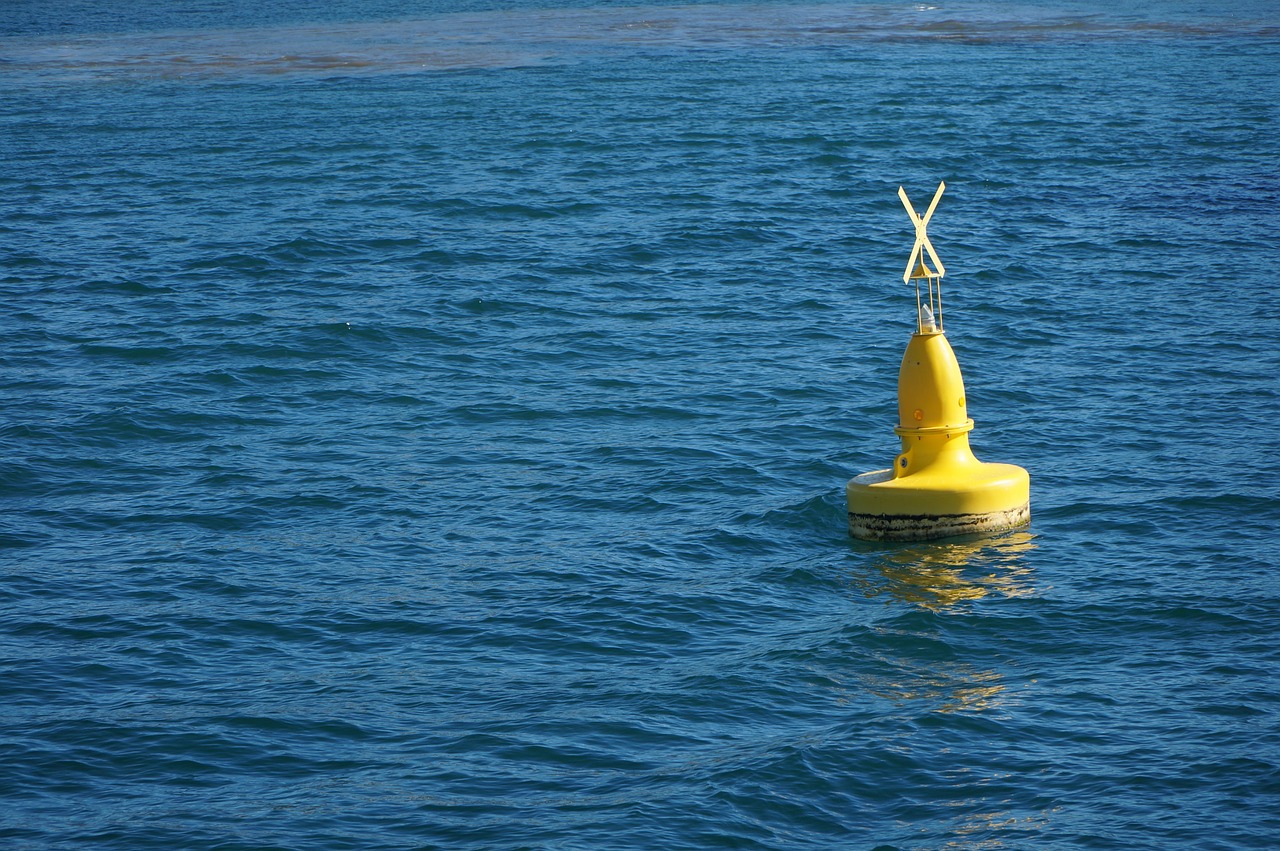
Choosing the Right Materials
When it comes to ensuring the safety of stairs and balustrades in your home, is absolutely essential. The materials you select not only affect the aesthetic appeal of your home but also play a significant role in the safety and durability of these structures. Think of your stairs and balustrades as the backbone of your home’s safety; if they're not constructed with the right materials, you could be setting the stage for accidents and injuries. So, what should you consider when making this important decision?
First off, let's talk about durability. Stairs and balustrades endure a lot of foot traffic, and they need to withstand wear and tear over time. For instance, hardwood options like oak or maple can offer a warm, inviting look but may require more maintenance compared to synthetic materials. On the other hand, metal options, such as aluminum or steel, are incredibly durable and can withstand the elements if you live in an area with harsh weather. They also require less maintenance, making them a practical choice for busy households.
Next, consider maintenance. Different materials have different upkeep requirements. For example, wooden stairs may need regular sanding and refinishing to keep them looking their best, while metal stairs might only need occasional cleaning to remove dirt and debris. To help you visualize the differences, here’s a quick comparison:
| Material | Durability | Maintenance | Aesthetic Appeal |
|---|---|---|---|
| Wood | Moderate | High | Warm and inviting |
| Metal | High | Low | Modern and sleek |
Another critical aspect to consider is slip resistance. Regardless of the material you choose, ensuring that your stairs and balustrades are safe for all users is paramount. For wooden stairs, applying a non-slip finish can greatly reduce the risk of slips, especially in homes with children or elderly residents. Metal stairs, on the other hand, can benefit from anti-slip treads that provide traction, even in wet conditions.
Finally, don’t overlook the design aspect. The materials you choose should not only be functional but also complement your home's overall style. Whether you prefer the rustic charm of wood or the industrial feel of metal, the right choice can elevate your home’s aesthetic while keeping safety in check. Imagine walking up a staircase that not only feels sturdy underfoot but also looks stunning—now that’s a win-win!
In conclusion, selecting the right materials for your stairs and balustrades is a multi-faceted decision that involves weighing durability, maintenance, slip resistance, and aesthetics. By taking the time to consider these factors, you can create a safe and beautiful environment for your family and guests.
- What is the safest material for stairs? While both wood and metal can be safe, metal often provides superior durability and slip resistance.
- How often should I maintain my stairs? Wooden stairs should be inspected regularly and refinished every few years, while metal stairs may only need cleaning.
- Can I mix materials for my stairs and balustrades? Yes, mixing materials can create a unique aesthetic, but ensure they complement each other in terms of safety and design.
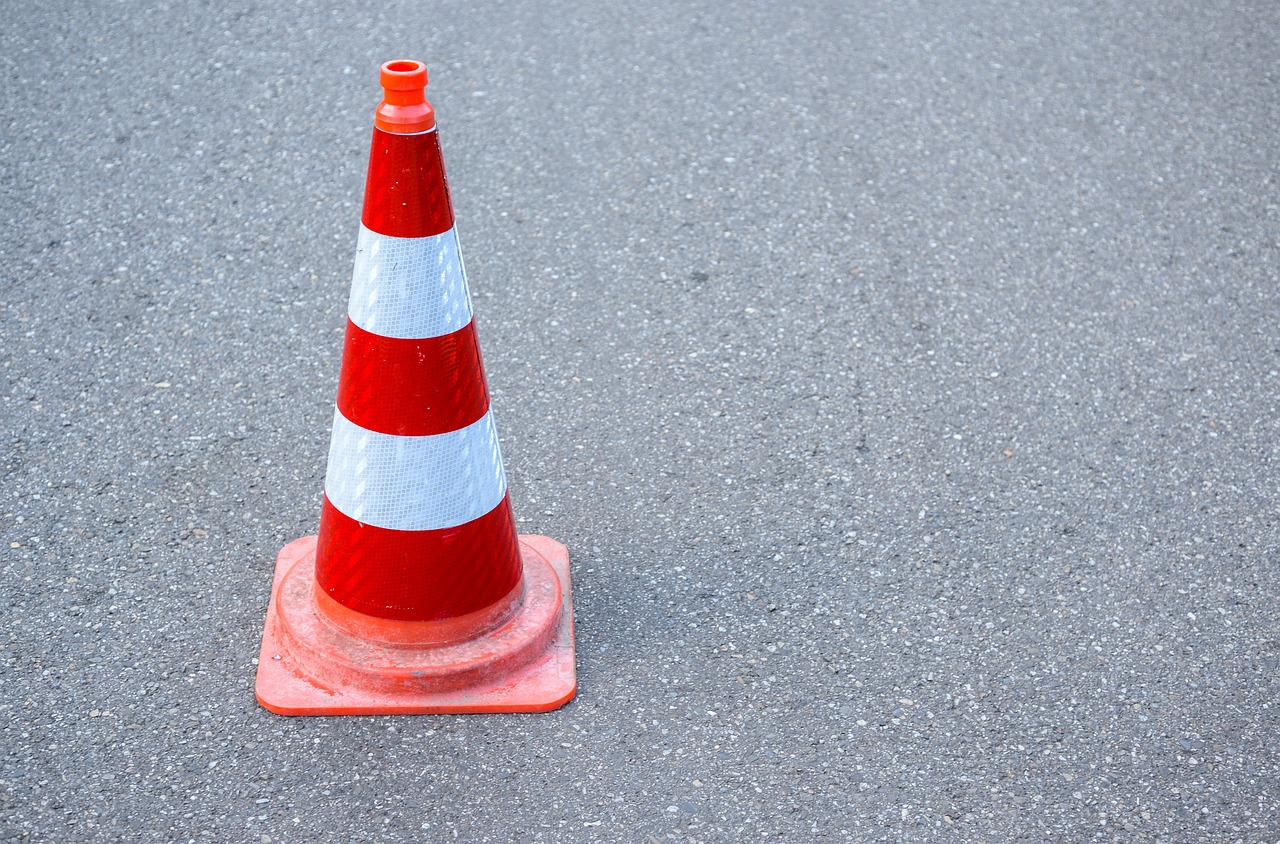
Wood vs. Metal Stairs
When it comes to choosing between wood and metal stairs, the decision can feel overwhelming. Each material has its unique set of advantages and disadvantages, and understanding these can help homeowners make an informed choice that prioritizes safety and aesthetics. Let's dive into the comparison!
Wooden stairs are often celebrated for their warmth and natural beauty. They can add a touch of elegance to any home, creating a cozy atmosphere. However, they do come with some safety concerns. For instance, wooden stairs can become slippery, especially if they are polished or if water is spilled on them. To mitigate this risk, homeowners can apply non-slip finishes or install anti-slip treads. Additionally, wooden stairs require regular maintenance to prevent issues like warping or rotting, which can compromise safety over time.
On the other hand, metal stairs offer durability and strength. They are less prone to wear and tear compared to wood, making them a long-lasting option. Metal stairs can also be treated with anti-slip coatings that enhance safety, especially in high-traffic areas or outdoor settings. However, the aesthetic appeal of metal stairs can vary widely depending on the design and finish. Some people may find them cold or industrial-looking, which could clash with the overall decor of a home. It's crucial to choose a style that complements your space.
To summarize the differences, here’s a quick comparison:
| Feature | Wooden Stairs | Metal Stairs |
|---|---|---|
| Appearance | Warm and inviting | Modern and sleek |
| Durability | Requires maintenance | Very durable |
| Safety | Can be slippery | Can be treated for slip resistance |
| Cost | Varies based on type of wood | Generally more affordable in the long run |
Ultimately, the choice between wood and metal stairs boils down to personal preference, budget, and specific safety considerations. Whether you lean towards the classic charm of wood or the robust nature of metal, ensuring that your stairs are equipped with appropriate safety features is paramount. After all, the last thing you want is for a beautiful staircase to become a hazard in your home!
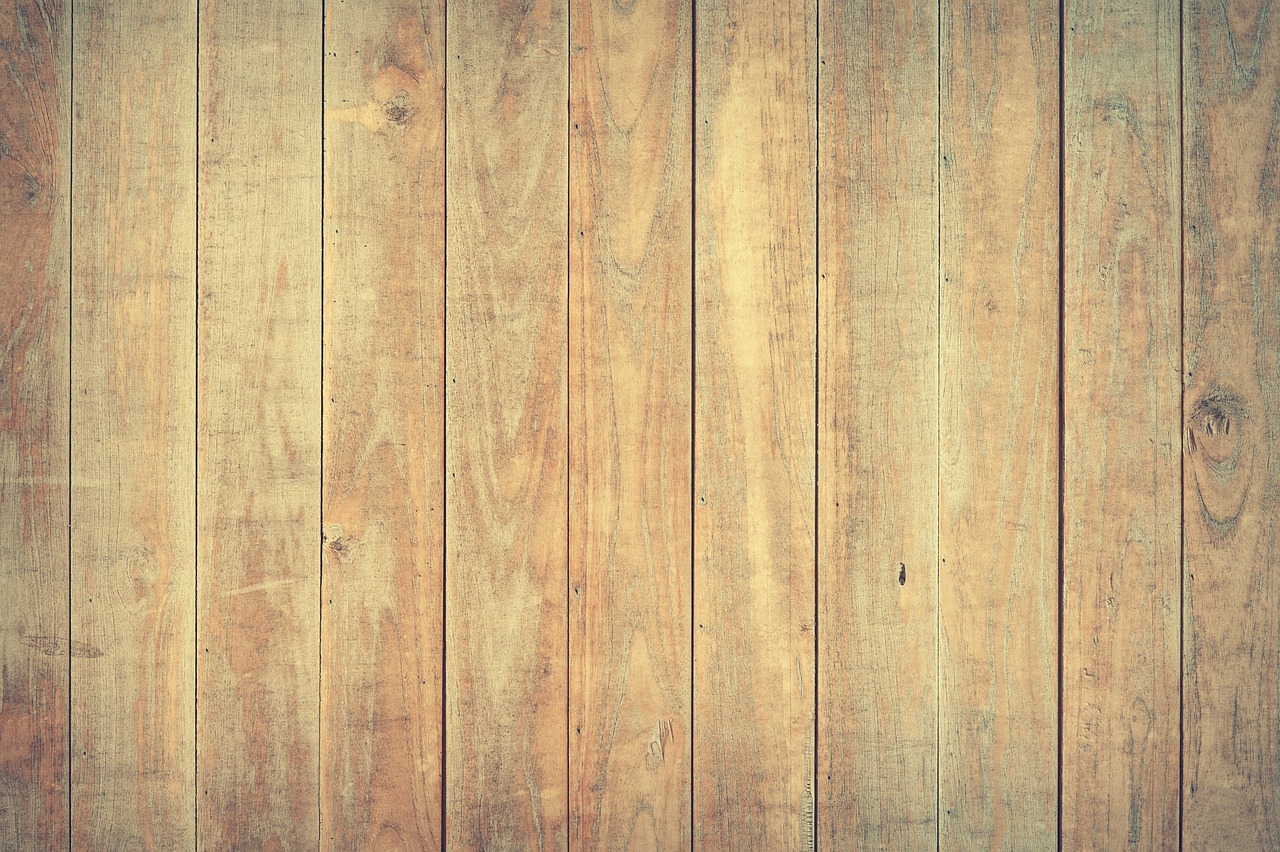
Wooden Stair Safety Features
When it comes to ensuring safety on wooden stairs, several important features should be considered to minimize the risk of accidents. One of the most crucial aspects is the application of non-slip finishes. These finishes not only enhance the aesthetic appeal of the wood but also provide a textured surface that significantly reduces the likelihood of slipping, especially in homes where children or elderly residents are present. Imagine walking down a beautifully polished wooden staircase, only to find yourself slipping on a smooth surface—it's a nightmare scenario that can easily be avoided with the right finish.
Proper railing installation is another key safety feature that cannot be overlooked. Railings should be installed at a height that is comfortable for users, typically between 34 to 38 inches above the stair tread. Additionally, the spacing between balusters should not exceed 4 inches to prevent small children from slipping through. Think of railings as the safety net of your staircase; they provide support and stability while also acting as a barrier against falls. Ensuring that railings are securely anchored and made from sturdy materials can further enhance safety.
Furthermore, the design of the stairs themselves plays a significant role in safety. The treads—the part of the stair you step on—should be wide enough to accommodate a full foot, while the risers—the vertical parts—should be uniform in height. Inconsistent riser heights can lead to missteps and falls, creating a hazardous environment. Homeowners should also consider adding a visual contrast between the treads and risers to help individuals better gauge their steps, especially in low-light conditions.
Lastly, regular maintenance cannot be overstated. Wooden stairs require periodic checks for any signs of wear and tear, such as loose railings or splintered wood. A simple inspection routine can identify these issues before they escalate into serious safety hazards. For instance, if you notice any loose boards or cracks in the wood, addressing them promptly can save you from potential accidents down the line.
In summary, incorporating non-slip finishes, ensuring proper railing installation, maintaining uniform tread and riser dimensions, and committing to regular maintenance are all critical components of wooden stair safety. By taking these precautions, homeowners can create a safer environment for everyone in the household, allowing them to navigate their stairs with confidence.
- What is the best non-slip finish for wooden stairs?
There are several options available, including anti-slip coatings and textured varnishes. It's essential to choose a product that is specifically designed for high-traffic areas.
- How often should I inspect my wooden stairs?
It's advisable to conduct inspections at least once every six months, or more frequently if your stairs see heavy use.
- What should I do if I find a loose railing?
Immediately secure it back in place or consult a professional to ensure it is properly fixed to prevent accidents.

Metal Stair Safety Features
When it comes to ensuring safety in your home, metal stairs offer several advantages that can significantly reduce the risk of accidents. One of the primary safety features of metal stairs is the incorporation of anti-slip treads. These treads are designed to provide better grip, especially in areas that may be prone to moisture, such as near entrances or in outdoor settings. Imagine stepping onto a wet surface; without proper traction, you could easily slip and fall. Anti-slip treads act like a safety net, giving you the confidence to navigate your stairs safely.
Another essential feature is the use of corrosion-resistant coatings. Metal stairs are often exposed to the elements, which can lead to rust and deterioration over time. By applying protective coatings, you not only enhance the aesthetic appeal of the stairs but also extend their lifespan and safety. Think of these coatings as an armor that shields your stairs from the damaging effects of moisture and corrosion, ensuring they remain functional and safe for years to come.
Moreover, the design of metal stairs can also contribute to safety. For instance, many metal staircases are constructed with a solid framework, which minimizes the risk of structural failure. This is particularly important in high-traffic areas where stability is paramount. A well-constructed metal staircase can support significant weight without compromising safety, making it an ideal choice for both residential and commercial environments.
In addition to these features, it's also important to consider the installation of guardrails. Metal guardrails not only enhance the visual appeal of your staircase but also serve as a critical safety measure. They prevent falls by providing a secure barrier, especially for children and elderly individuals who may be more prone to accidents. When choosing guardrails, ensure they meet local building codes, which often specify height and spacing requirements to maximize safety.
Lastly, regular maintenance of metal stairs is crucial. Even with the best safety features, neglecting maintenance can lead to issues such as loose treads or rusting. Homeowners should routinely inspect their metal stairs for any signs of wear and tear and address them promptly. By doing so, you can ensure that your stairs remain a safe passage for everyone in your home.
- What are the best materials for anti-slip treads?
High-friction materials such as rubber or textured metal are ideal for anti-slip treads, providing excellent grip even in wet conditions.
- How often should I inspect my metal stairs?
It's recommended to inspect your metal stairs at least once every six months, or more frequently if they are exposed to harsh weather conditions.
- Can I paint my metal stairs?
Yes, but make sure to use paint specifically designed for metal surfaces and ensure that the stairs are clean and rust-free before applying.

Balustrade Design Considerations
When it comes to designing balustrades, several key factors must be taken into account to ensure both safety and aesthetics. First and foremost, the height of the balustrade is crucial. It needs to be tall enough to prevent accidental falls, particularly in homes with children or elderly residents. Generally, a height of at least 36 inches is recommended for residential properties, but this can vary depending on local building codes. It’s important to check these regulations to ensure compliance and enhance safety.
Another important aspect is the spacing between the balusters. If the gaps are too wide, a small child could easily slip through, leading to dangerous situations. The standard spacing is typically no more than 4 inches apart. This not only keeps little ones safe but also prevents pets from getting stuck or falling through. Thus, proper spacing is a vital design consideration that homeowners should prioritize.
Additionally, the materials used in balustrade construction play a significant role in both safety and visual appeal. Common materials include wood, metal, and glass, each offering unique benefits. For instance, wooden balustrades provide a warm, classic look but may require more maintenance over time. On the other hand, metal balustrades are often more durable and can withstand harsh weather conditions, making them a long-term investment. Glass balustrades can create a modern aesthetic while providing an unobstructed view, but they must be made from tempered glass to ensure safety.
Moreover, the design style of the balustrade should complement the overall architecture of your home. Whether you prefer a traditional look with ornate details or a sleek, contemporary style, the balustrade should harmonize with the rest of your decor. This not only enhances the beauty of your home but also increases its value. Remember, a well-designed balustrade can be a stunning focal point while also serving its primary function of keeping your loved ones safe.
Lastly, consider the finish of your balustrade. A non-slip finish is essential, especially for outdoor balustrades that will be exposed to rain or snow. This feature minimizes the risk of slipping, ensuring that your balustrade remains functional and safe throughout the year. By paying attention to these design considerations, you can create a balustrade that is not only beautiful but also enhances the safety and security of your home.
- What is the ideal height for a residential balustrade?
The recommended height is at least 36 inches, but it’s important to check local building codes. - How far apart should balusters be spaced?
Balusters should be spaced no more than 4 inches apart to prevent children or pets from slipping through. - What materials are best for balustrades?
Wood, metal, and glass are popular choices, each with its own advantages and maintenance requirements. - Can I install a balustrade myself?
While DIY installation is possible, it’s recommended to consult with a professional to ensure safety and compliance with regulations.
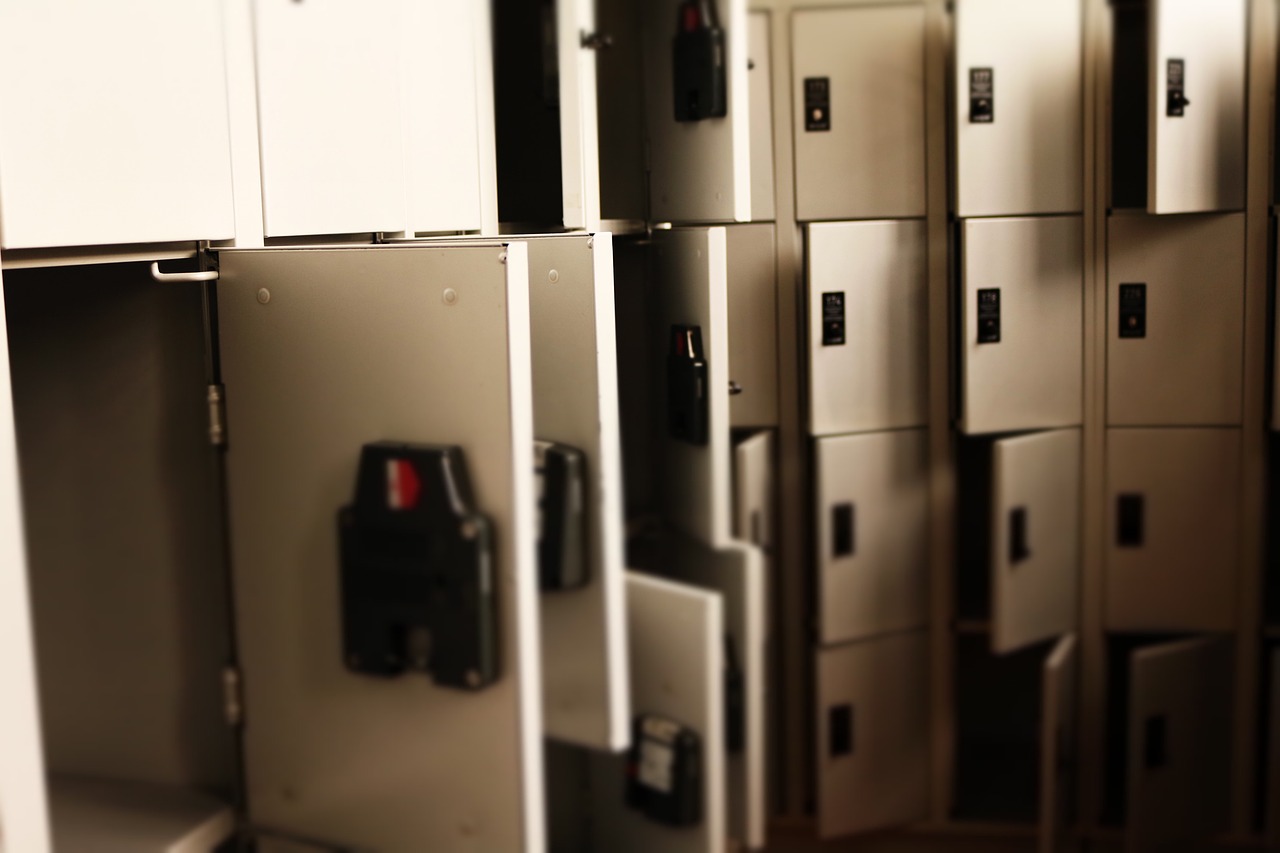
Regular Maintenance Practices
When it comes to ensuring the safety of stairs and balustrades in your home, regular maintenance is not just a suggestion; it's a necessity. Think of your stairs and balustrades as the backbone of your home's safety structure. If you neglect them, it's like ignoring the foundation of a house—eventually, it could lead to serious issues. Regular maintenance practices can significantly reduce the risk of accidents, making your home a safer place for everyone.
To keep your stairs and balustrades in top shape, it’s essential to establish a routine that includes inspections, cleaning, and repairs. This proactive approach not only helps identify potential hazards but also extends the lifespan of your structures. Here’s a breakdown of what you should focus on:
| Maintenance Task | Frequency | Description |
|---|---|---|
| Visual Inspection | Monthly | Look for cracks, loose railings, or signs of wear and tear. |
| Cleaning | Weekly | Remove dust, debris, and any slippery substances from stairs. |
| Repair | As Needed | Fix any identified issues immediately to prevent accidents. |
During your visual inspections, pay close attention to the following:
- Check for any cracks or chips in the stair treads.
- Ensure that balustrades are securely attached and not wobbly.
- Look for any signs of moisture that could lead to slippery surfaces.
Cleaning is another essential aspect of maintenance. A clean staircase is not only more aesthetically pleasing but also safer. Dust and grime can create hazardous conditions, especially if stairs are made of wood or metal. Regularly mopping or vacuuming can help maintain grip and traction, preventing slips and falls. Don't forget to clean the balustrades too; they can accumulate dust and grime that might make them slippery.
Now, let’s talk about repairs. It’s crucial to address any issues as soon as they arise. For instance, if you notice a loose railing, tighten it immediately. If a stair tread is cracked, consider replacing it to avoid any potential accidents. Ignoring these small repairs can lead to larger, more expensive issues down the line.
In addition to these routine practices, you might also want to consider seasonal checks. For example, during the winter months, ensure that your stairs are free of ice and snow, which can pose significant slipping hazards. Similarly, during heavy rains, check for water accumulation that could make surfaces slippery.
Ultimately, regular maintenance practices for stairs and balustrades not only enhance safety but also contribute to the overall aesthetic appeal of your home. By investing a little time each month, you can ensure that your home remains a safe haven for both residents and visitors alike. Remember, a safe home is a happy home!
Q1: How often should I inspect my stairs and balustrades?
A: It's recommended to conduct a visual inspection at least once a month, but feel free to check more frequently if you have children or elderly residents in your home.
Q2: What should I do if I find damage during an inspection?
A: Address any issues immediately. If you notice loose railings or cracked stairs, repair or replace them as soon as possible to prevent accidents.
Q3: Are there specific cleaning products I should use?
A: Use non-slip cleaners for wooden stairs and avoid harsh chemicals that could damage the finish. For metal stairs, ensure that the cleaner is safe for metal surfaces.
Q4: Can I perform maintenance myself, or should I hire a professional?
A: Many maintenance tasks can be done by homeowners. However, for significant repairs or if you're unsure about safety standards, it's best to consult a professional.
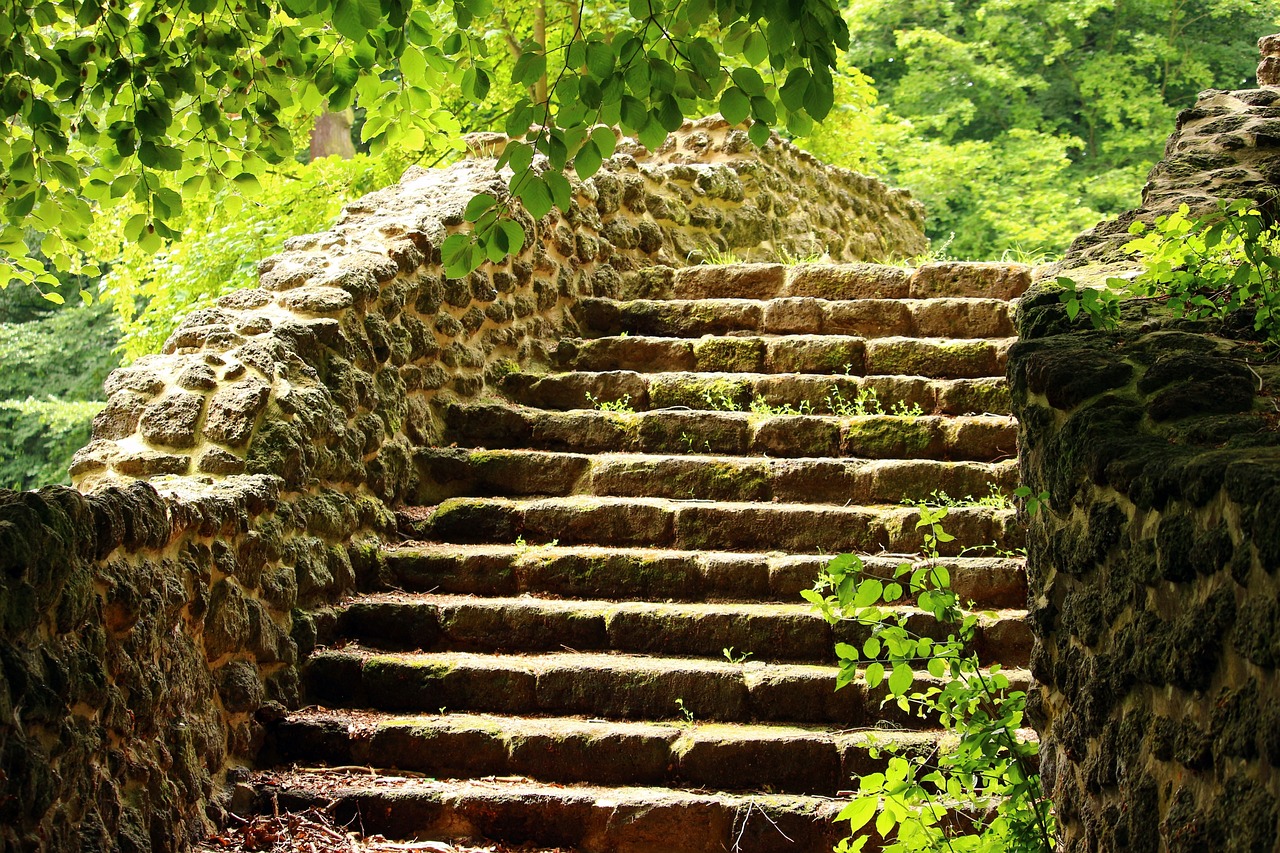
Inspection Guidelines
When it comes to ensuring the safety of your stairs and balustrades, regular inspections are not just a good idea—they're essential. Think of it like checking the oil in your car; neglecting it could lead to serious problems down the road. By adopting a proactive approach to inspection, you can catch potential hazards before they become accidents waiting to happen. So, what should you be looking for during these inspections?
First and foremost, check for structural integrity. This means looking for any signs of wear and tear, such as cracks in the stairs or loose balustrades. A simple visual inspection can reveal a lot. Look closely at the joints where the balustrades meet the stairs; these are often the first places to show signs of stress. If you notice any movement or instability, it’s time to take action.
Next, don’t forget about the surface condition. Stairs should be free of debris, and the surfaces should be smooth and free from any slippery substances. If your stairs are wooden, inspect them for splinters or rough patches that could pose a risk. For metal stairs, check for rust or corrosion, which can weaken the structure over time. Remember, even a small amount of water can make surfaces dangerously slippery, so keep them clean and dry.
Another crucial aspect to inspect is the railing height and spacing. Balustrades should be at a height that prevents falls, typically at least 36 inches for residential areas. Additionally, make sure that the spacing between the balusters is no more than 4 inches apart to prevent small children from slipping through. If you have older adults in your home, consider installing additional support rails to enhance safety.
In order to make your inspections more effective, consider creating a simple checklist. Here’s a quick example:
| Inspection Item | What to Look For | Action Needed |
|---|---|---|
| Structural Integrity | Cracks, loose parts | Repair or replace |
| Surface Condition | Debris, slippery spots | Clean and treat |
| Railing Height | Minimum 36 inches | Install or adjust |
| Baluster Spacing | More than 4 inches | Install additional balusters |
By keeping this checklist handy during your inspections, you can ensure that nothing slips through the cracks—pun intended! And remember, regular inspections should be accompanied by maintenance practices. If you spot something that needs attention, don’t hesitate to address it immediately. Ignoring minor issues can lead to major safety hazards down the line.
Finally, it’s a good idea to document your inspections. Keeping a log of what you checked and any actions taken can help you track the condition of your stairs and balustrades over time. This not only serves as a reminder for future inspections but can also be useful if you ever decide to sell your home.
Q: How often should I inspect my stairs and balustrades?
A: It's best to conduct inspections at least once every six months, but if you have children or elderly residents, consider doing it quarterly.
Q: What should I do if I find a major issue during an inspection?
A: If you find something that poses an immediate risk, such as a loose railing or a cracked step, address it right away. This might mean making repairs yourself or hiring a professional.
Q: Can I perform these inspections myself?
A: Yes, many homeowners can perform basic inspections. However, if you're unsure about the safety of your stairs or balustrades, it’s always a good idea to consult a professional.
Q: Are there any specific tools I need for inspection?
A: A simple flashlight for better visibility, a measuring tape for checking heights and spacings, and a screwdriver for tightening loose components are usually sufficient.
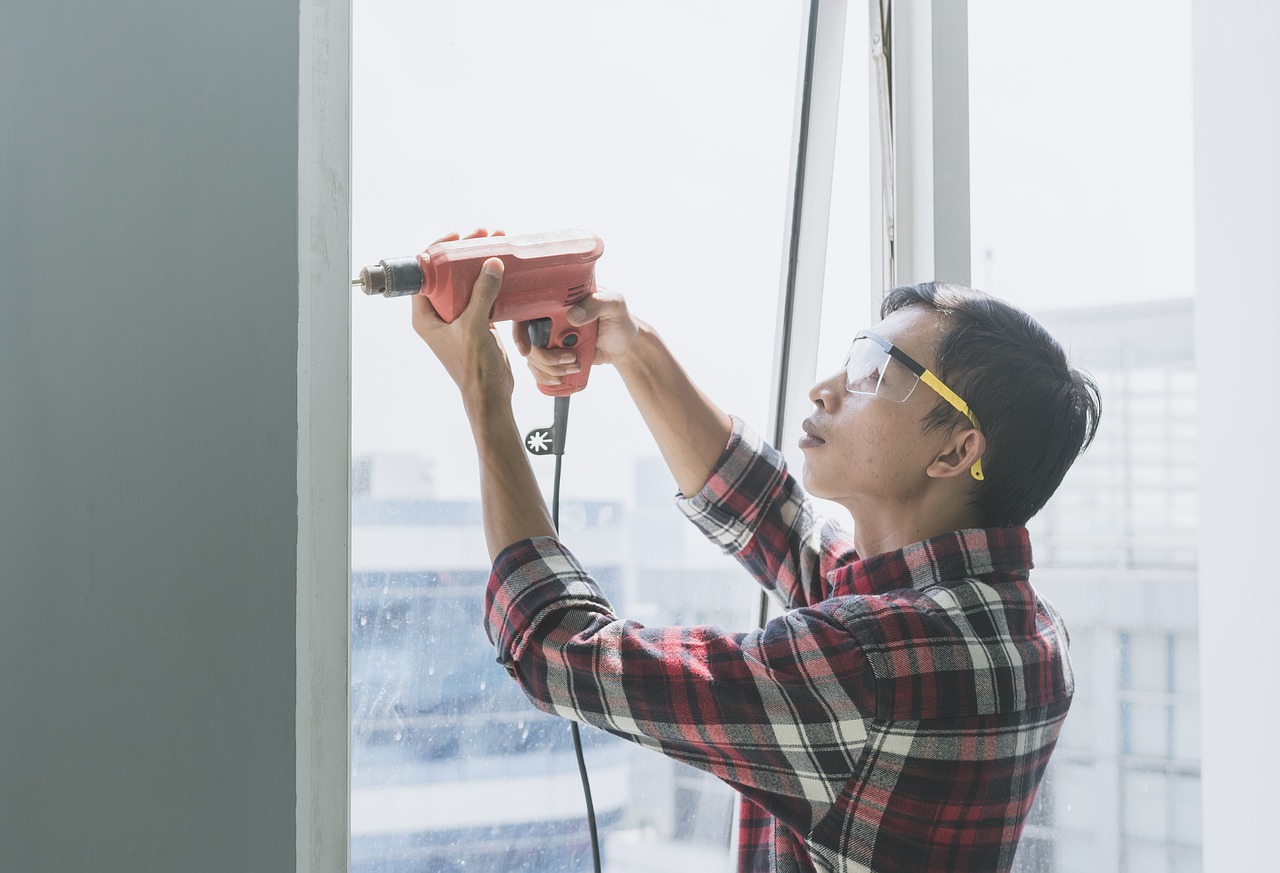
Repair and Replacement Tips
When it comes to maintaining the safety of your home, particularly regarding stairs and balustrades, understanding when to repair or replace components is crucial. Over time, wear and tear can lead to potential hazards that may not be immediately visible. So, how do you determine whether a simple fix will suffice or if a complete replacement is necessary? Well, let's dive into some practical advice that will help you make those decisions.
First and foremost, regular inspections are your best friend. Make it a habit to check your stairs and balustrades at least once every few months. Look for signs of damage such as cracks, loose railings, or uneven steps. If you notice any of these issues, it’s time to take action. For instance, if a step is creaking or feels unstable, it may just need a good tightening of screws or nails. However, if the wood is rotting or the metal is rusting, you might need to consider a replacement.
Another critical aspect to consider is the age of your materials. If your stairs and balustrades are older than ten years, they may not meet current safety standards. In this case, it might be wise to invest in new materials that provide better durability and safety features. For instance, modern composite materials can offer greater longevity and resistance to environmental factors compared to traditional wood.
Here are some specific scenarios to help guide your decision:
- Wooden Stairs: If you find splintering or significant warping, this often indicates that replacement is necessary. A simple patch job might not hold up against future wear.
- Metal Stairs: Look for rust or corrosion. If the metal is compromised, replacing the affected sections or the entire staircase might be the safest option.
- Balustrades: If the balustrade is shaky or the spacing between spindles exceeds safety standards (usually 4 inches), a replacement is vital to prevent accidents.
Additionally, don't forget about the importance of hiring professionals when necessary. While DIY repairs can save money, some repairs require specialized skills, especially when it comes to structural integrity. If you're uncertain about a repair, consulting with a contractor can provide peace of mind.
Lastly, always keep safety as your top priority. If a repair feels beyond your skill level or if the damage is extensive, don’t hesitate to replace it. Remember, a safe home is a happy home!
- How often should I inspect my stairs and balustrades? It's recommended to inspect them at least every three to six months.
- What are the signs that I need to replace my stairs? Look for significant damage like cracks, rot, or instability. If repairs are becoming frequent, replacement may be more cost-effective.
- Can I repair stairs and balustrades myself? Yes, for minor repairs, but for significant issues, it's best to consult a professional.
Frequently Asked Questions
- What are the common hazards associated with stairs?
Stairs can pose various hazards, including slippery surfaces, uneven steps, and inadequate lighting. These factors can lead to accidents, especially for children and elderly individuals. It's crucial to address these issues to ensure everyone's safety.
- How can I choose the right materials for my stairs and balustrades?
When selecting materials, consider durability, maintenance, and safety features. Wood offers a warm aesthetic but requires regular upkeep, while metal is sturdy and often comes with anti-slip options. Evaluate your lifestyle and preferences to make the best choice.
- What safety features should I look for in wooden stairs?
Look for non-slip finishes, proper railing installation, and adequate spacing between steps. These features can significantly reduce the risk of slips and falls, making your wooden stairs safer for everyone.
- Are metal stairs safer than wooden stairs?
Both materials have their pros and cons. Metal stairs can offer enhanced safety features like anti-slip treads and corrosion-resistant coatings. However, wooden stairs can be just as safe with the right maintenance and safety features in place.
- What should I consider when designing balustrades?
Key design elements include height, spacing between balusters, and the materials used. Ensure that your balustrades meet safety standards while also complementing the overall aesthetic of your home.
- How often should I inspect my stairs and balustrades?
It's recommended to inspect your stairs and balustrades at least twice a year. Look for signs of wear, loose railings, or uneven steps to catch potential hazards before they lead to accidents.
- When should I repair or replace components of my stairs or balustrades?
Repair or replace components when you notice significant wear, damage, or instability. Addressing these issues promptly can prevent accidents and ensure the safety of all household members.




